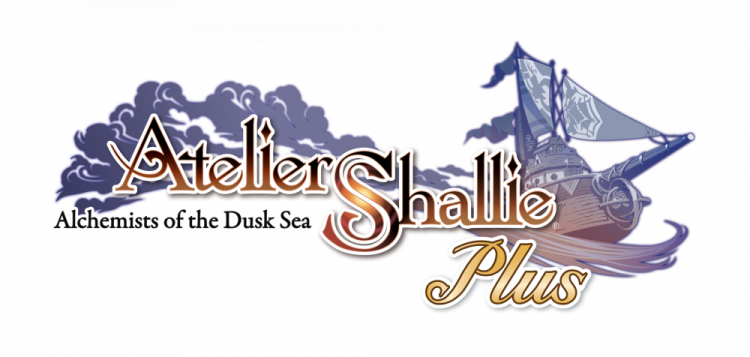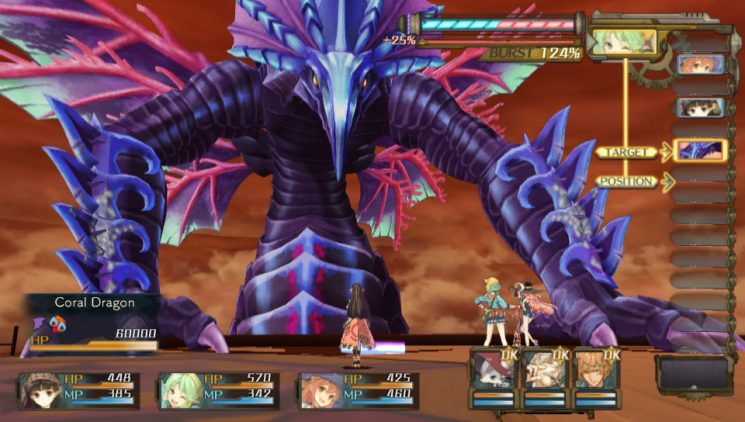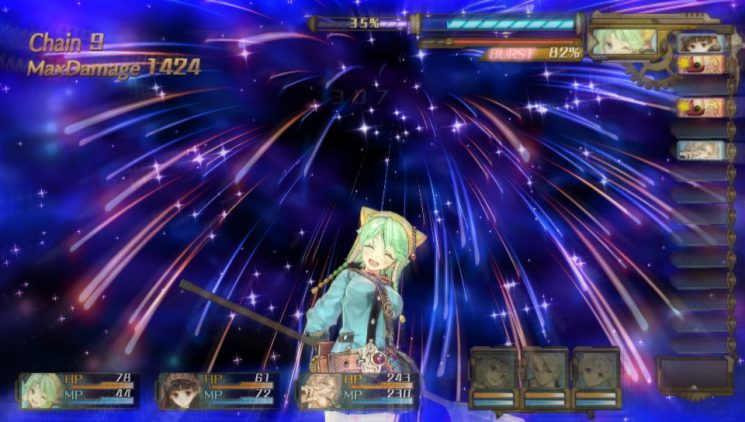Two years ago, I studied abroad in Japan. Arriving in a strange new country knowing nothing of the language, mannerisms, or social attitudes, there was clearly a bit of a learning curve. Even so, I charged headfirst into 4 months of living in this strange new land, learning and seeing everything it had to offer. In a way, this was my experience jumping into Atelier Shallie Plus: Alchemists of the Dusk Sea, an enhanced version of a 2014 game from a series I knew nothing of. I was jumping into a strange new land, albeit without nearly as much wonder or intrigue.
Game Name: Atelier Shallie Plus: Alchemists of the Dusk Sea
Platform(s): PS Vita
Publisher(s): KOEI TECMO
Developer(s): Gust Co. Ltd.
Release Date: January 17, 2017
Price: $39.99
Jumping in with no context, the story begins fairly straightforward. After an introductory segment playing as both main characters, you choose to focus on one for the initial playthrough. There’s Shallistera, the daughter of her village’s chief who is on a quest to stop a recent drought; and there’s Shallote, a Stellard native who is bored of her dull, mundane life. Both girls are alchemists with the nickname “Shallie.” I only played as Shallistera, but upon finishing the game, new game plus is available to see the other side.
The characters are fairly different in both design and personality. Shallistera is more reserved and innocent, while Shallote is more outgoing and loud, with an appearance that supports the claim. The supporting cast is strong, but I found myself often jarred by the English voice acting. Several characters had dull and unfitting performances, and it was enough to take me out of the experience. Luckily, the Japanese voice acting is available and significantly better.
The acting tropes somewhat match the visual style the game is blatantly going for: a very “anime” style. From the cover, you see an anime art style, which the game often displays well. Certain environments (more so when not staring at only barren wastelands and sand, of which there is a lot given the title of the game) are varied and pretty, and the cutscenes are spectacular. However, incorporated in the cutscenes were CG animated effects, which often came across as out-of-place. The closest example I can muster are the animation styles utilized in Anno’s Rebuild of Evangelion film franchise, although not nearly as impressive as those.
What really shines in the game is the alchemy. Entering a map allows you multiple means to gain materials, with which you can craft items. These items can then be used as curatives, equipment, and even as weapons in combat. The system starts off very daunting and confusing but takes very little time to get the hang of. Upon learning the ins and outs, you can begin to apply modifiers to your alchemy and really experiment with what you are creating. It’s a rather deep system that really shines.
It’s then unfortunate that combat, to me, was rather uninspired and uninteresting. The game utilizes what I compare to Final Fantasy X‘s CTB system; the side of the screen shows the turn order of your party and the enemies, and that turn order can be manipulated depending on certain actions taken. While this on its own is a system that I enjoy, I never felt my characters were progressing much to make combat itself enjoyable. The game encourages visiting multiple areas on the world map in one go, but it took a long time before I felt my characters had grown enough to handle things more easily. There’s a certain imbalance in player growth that made combat simply a chore for a period of time.
The game’s quest system is rather simple with a twist. You receive “life tasks,” which act much the same, but can accept additional tasks in multiple categories and even receive dynamic ones while out exploring. The game constantly ensures you have something to work on, which unfortunately comes close to reaching borderline monotony when paired with the dull combat. The better quests involved material hunting and alchemy, as opposed to the monster-killing tasks.
It should be noted that this title is also compatible with Playstation TV. While the game looks and plays fairly well on Vita, I tested it on my own PSTV to some poor results. Blurrier visuals, more framerate issues, and worse performance, in general, make this a title I’d only recommend playing on the go. The design of the game kind of compliments that anyway.
All in all, Atelier Shallie Plus: Alchemists of the Dusk Sea is a fine game. Not spectacular, but not terrible. The combat can be monotonous, but the crafting is superb. The acting can be cringeworthy, but the presentation is often stunning. Where the game has strengths, it also has equal weaknesses. Being someone who cannot really compare it to others in its franchise, this review is not for those who are fans of the series. Then again, if you were a fan, you were likely to pick this up anyway.
For those who have never played this series before, this is by no means a bad start. It’s worth it for the alchemy, and if you like the turn manipulation of Final Fantasy X‘s CTB, you likely will not mind this. Shallie doesn’t have nearly the splendor of that title (much like my reached analogy at the start of this review), but if you want something new, you can’t necessarily go wrong.
*Atelier Shallie Plus: Alchemists of the Dusk Sea was provided to us by KOEI TECMO America for review purposes. For more information on how we review video games and other media/technology, please go review our Review Guideline/Scoring Policy for more info.
Stay for the crafting, leave for the fighting
Summary
Atelier Shallie Plus has its ups and downs. As a newcomer, I wasn’t necessarily disappointed, but I definitely would not say I was too impressed either.
-
Stay for the crafting, leave for the fighting







